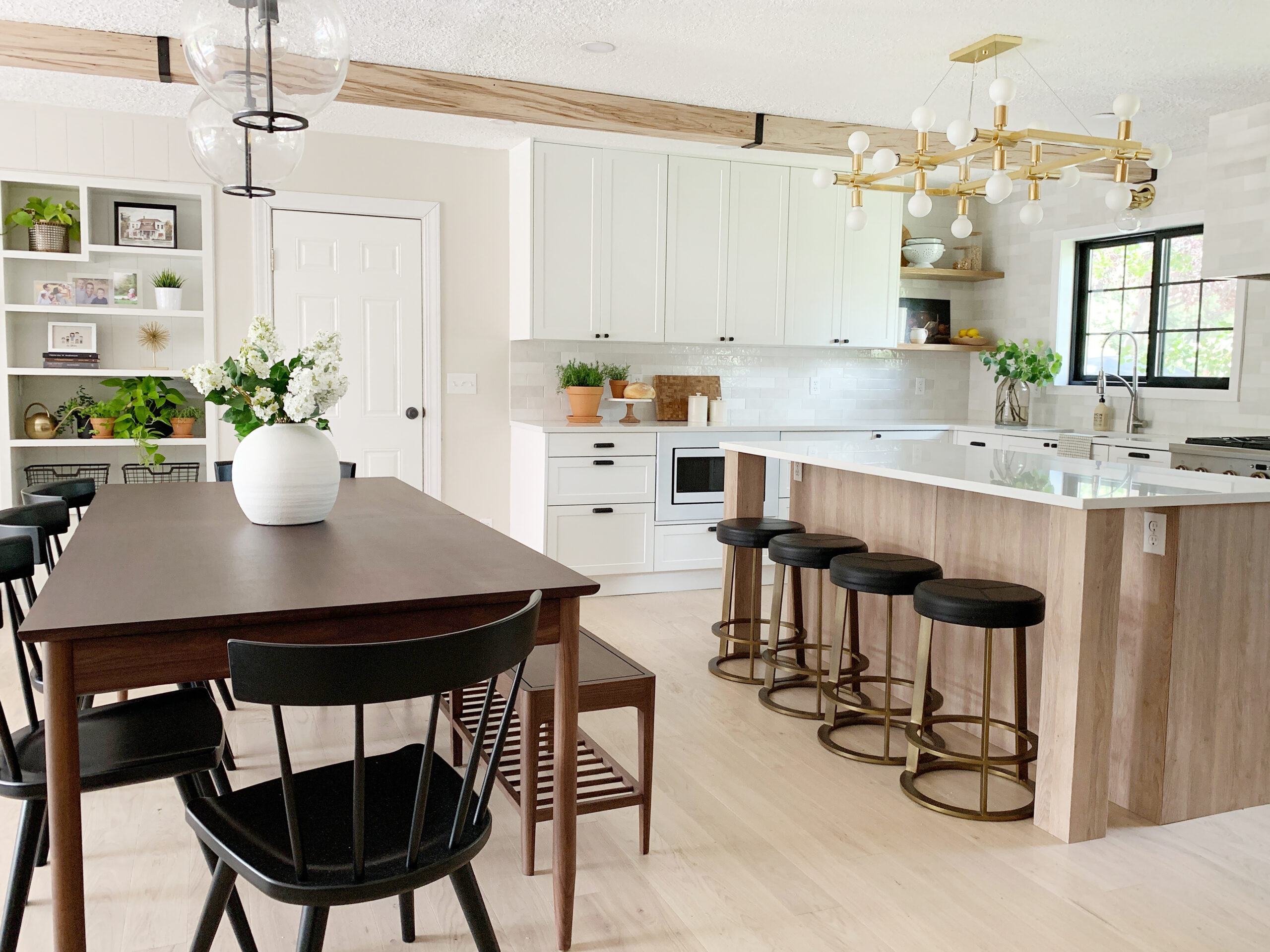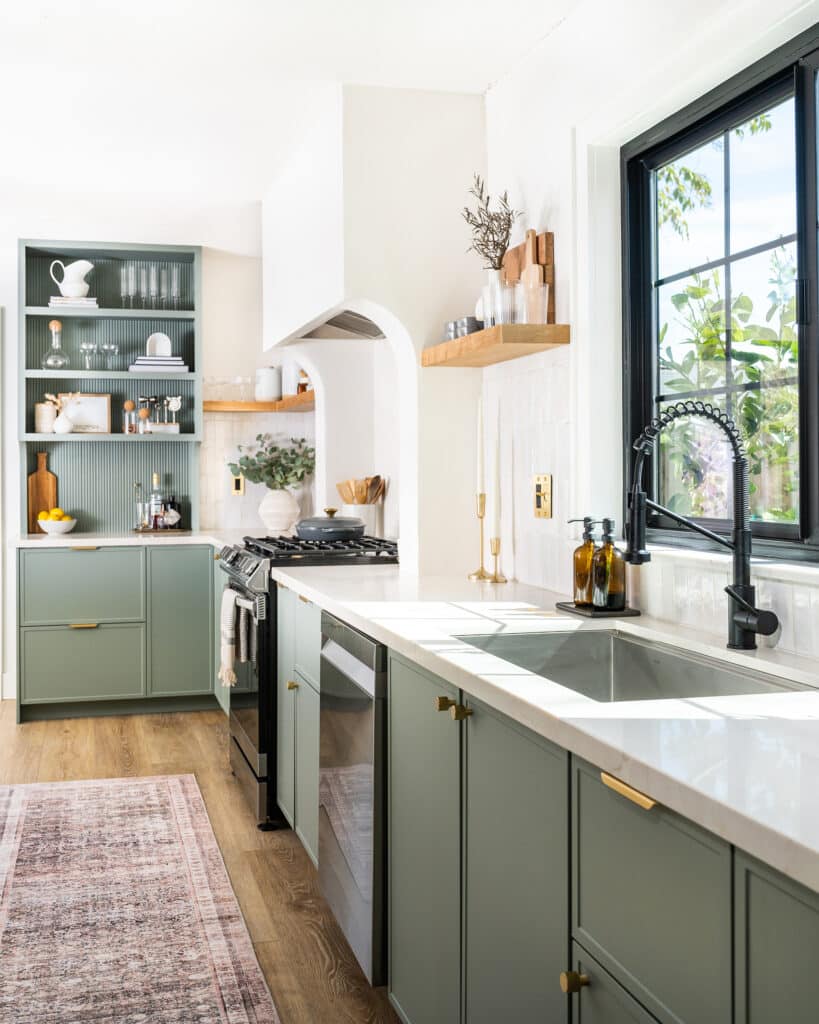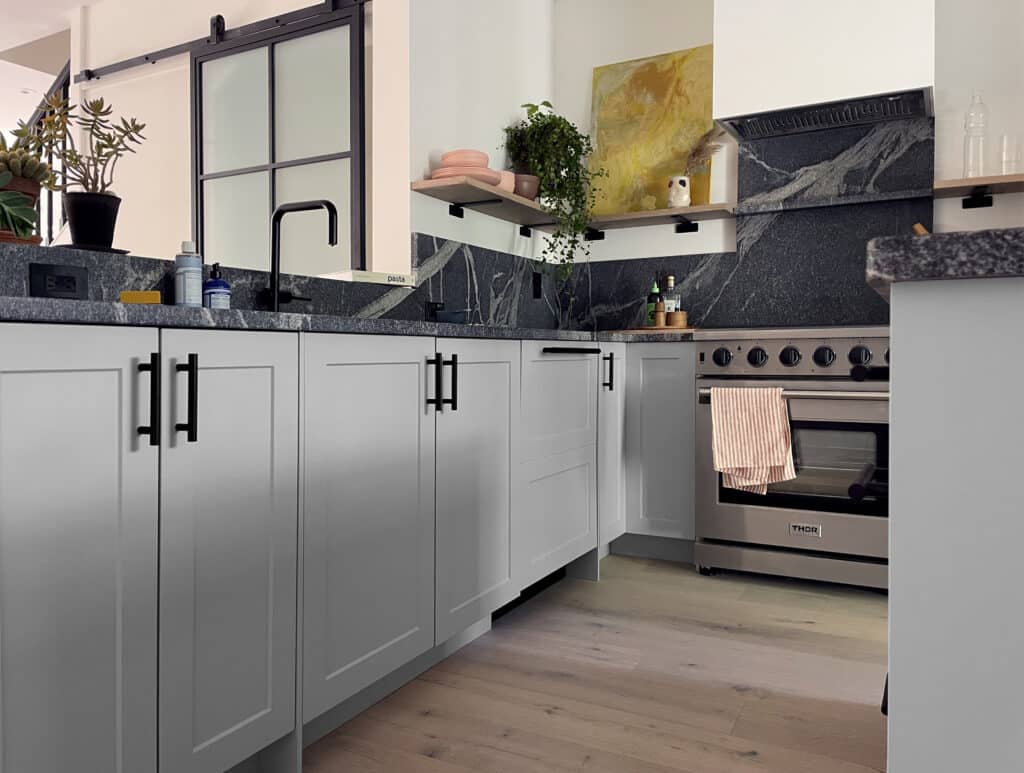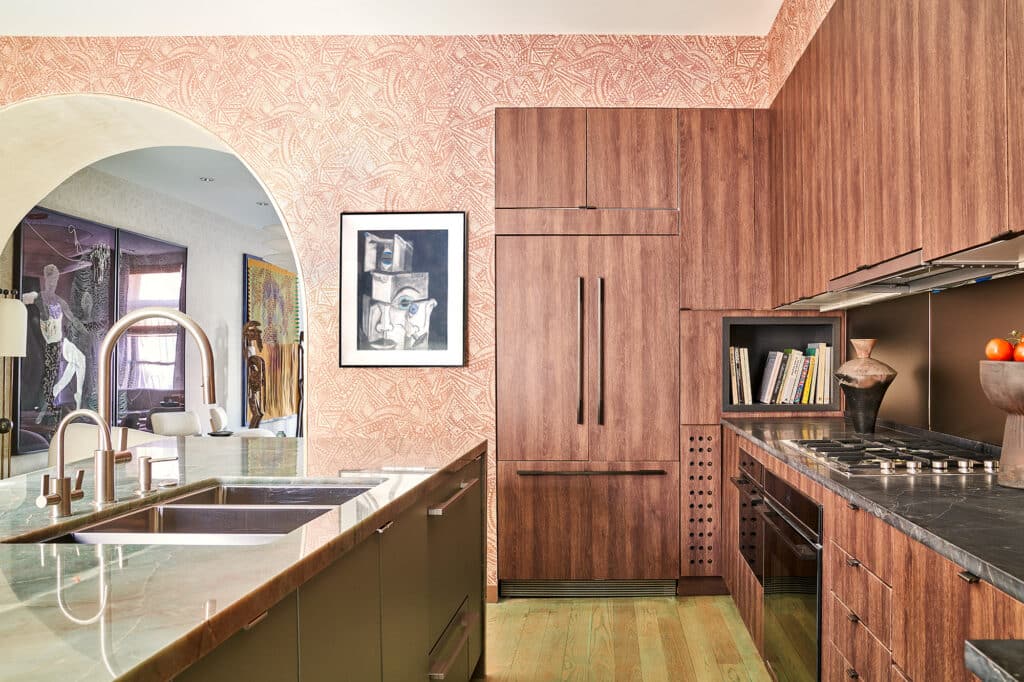When you’re planning to renovate your kitchen, flooring is likely not the highest priority on your list. After all, it’s easy to ignore what’s beneath you when you’re stuck staring at that outdated backsplash as you make dinner every night and your eyes are drawn to the cabinets you now consider a bit lackluster every time you enter the room. But flooring shouldn’t just be an afterthought when it quite literally lays the foundation for the rest of your design.
“It’s one of those things that can be very understated, but it’s not easy to explain the impact that it has when you compare it to, say, walking into a light blue kitchen that blows you away,” says Marc Bacher, founder of Stuga, a direct-to-consumer supplier of Scandinavian-inspired hardwood floors. “Flooring is something people should spend some time really thinking about.”
But picking the best flooring for your kitchen can be an intimidating prospect—which likely has a lot to do with the fact that stepping into a flooring store provides you with endless options and little guidance. Picking your floor is a big design decision that will transform the feeling of your space, but it doesn’t have to be quite as challenging as it seems.
Here, Bacher shares his top tips for getting the best flooring for your kitchen.
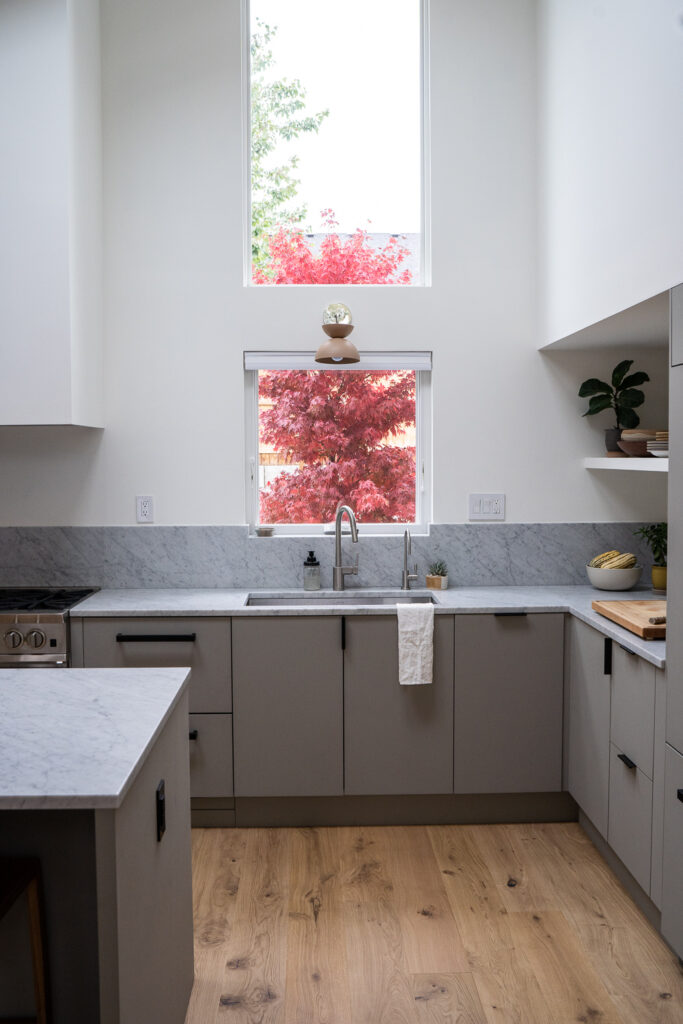
Photo by Mickey Trescott, featuring Shell by Stuga
Pick your material
There are many choices to consider for your kitchen flooring, but typically, you’ll have to choose from three main options (with many different varieties to choose between them): hardwood, tile, or linoleum. “A lot of it depends on lifestyle,” Bacher says. A linoleum floor may be ideal for someone with a more constrained budget. Tile is a popular option, but can come at a relatively high price point, depending on the materials you choose—and it’s always prone to breakage, which should be taken into consideration. A hardwood floor may not be everyone’s first thought when it comes to the kitchen, but it can actually hold up well to wear and tear and look great in the space.
“You could have beautiful hardwood floors throughout the house, and then you break it up and put something different in the kitchen, but I think that’s an unnecessary break,” Bacher says. Hardwood flooring generally holds up well to messes and high-traffic, though it’s not totally immune to change—a dropped knife may produce a knick and a puddle of water left for a long time may produce warping, but generally, it’s low-maintenance. There is a small exception: Floors with oil finishes (much like furniture) can be more susceptible to staining.
Start with a color
It can be extremely overwhelming starting from the (literal) ground up as you start your search for the perfect flooring—there are so many possibilities, you’ll likely find it challenging narrowing it down to your ideal pick. So, Bacher says to take it one step at a time, first deciding what color you want the floor to be, and then later deciding on the details.
Here is where your lifestyle should also come into consideration. “Certain tones of floors show more wear and tear than other tones,” Bacher says. A very light or white floor will show dirt more easily than a slightly darker, warmer-toned option—and similarly, a very dark floor will show dust and crumbs. The most low-maintenance option (read: the one that lets you get away with sweeping less often) is somewhere in the middle.
“Honestly, I’m a fan of natural tones because they are design-friendly—you can go in so many different directions with them,” Bacher says. “They’re a great canvas for you to build on.”
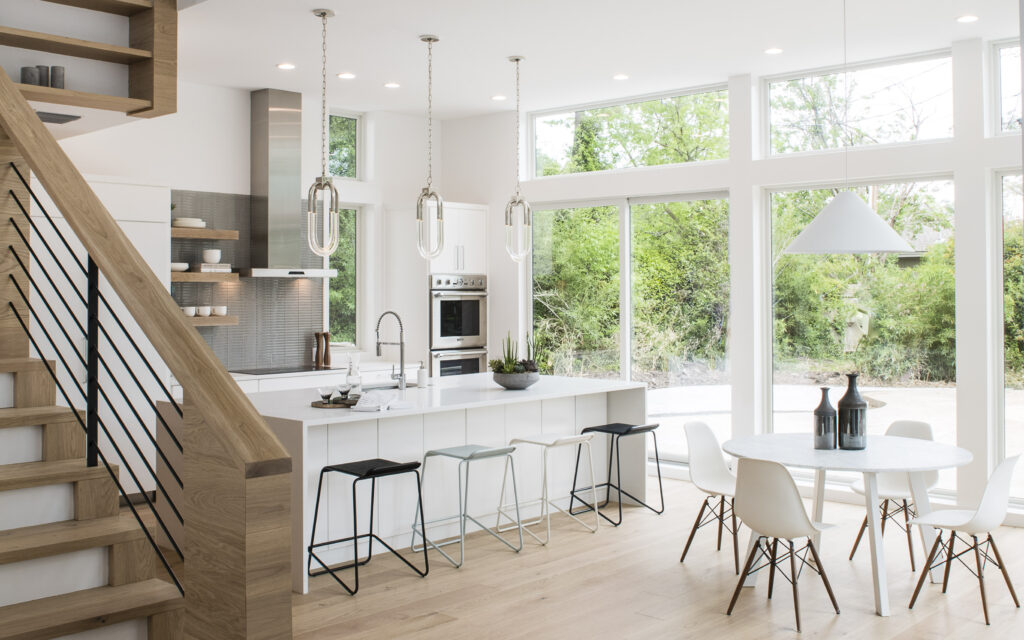
Photo by Casey Woods featuring Fika by Stuga
Settle on the details
Once you know what color you want your flooring to be, then it’s time to think about smaller design details. With a tile floor or linoleum floor, that means picking your pattern and figuring out how detailed you want it to be. With a hardwood floor, that means picking plank size, pattern, and wood grain. A simple, wide-plank floor installed in an offset pattern gives off a timeless effect, but if you want to try something different, you can always opt for a herringbone pattern, or choose a wood that has more distinctive natural textures. “Those floors can be really rustic,” Bacher says. “They instantly ground you.”
Test it out
Just like you’d swatch a wall, you can (and absolutely should) get a sample of the flooring you’re eyeing to see what it looks like in your space and against your cabinets. “We encourage people to get a couple samples of the specific floor they’re looking at because for hardwood, the tone can change a little bit depending on where it’s cut from on the plank,” Bacher says.
Once you’ve sat with it—seeing how your sample looks with any other planned renovations both during the day and at night—you can go on to figure out installation. Whether the flooring of your choice can be installed against existing cabinets or needs to be installed under them is a case-by-case basis, dependent on your existing layout. Talk to your contractor to establish a plan, and if you’re redoing both your cabinets and flooring in one renovation, don’t save the latter as an afterthought. “Try to make it a part of the mood board you’re building over time,” Bacher says. From there, things will really start to look up.





